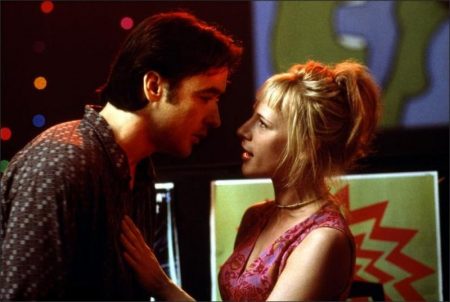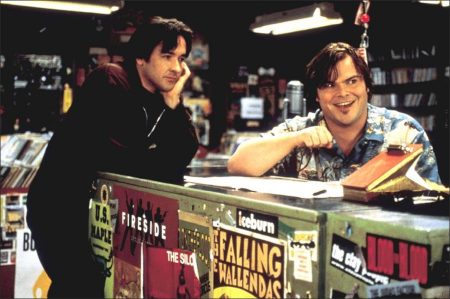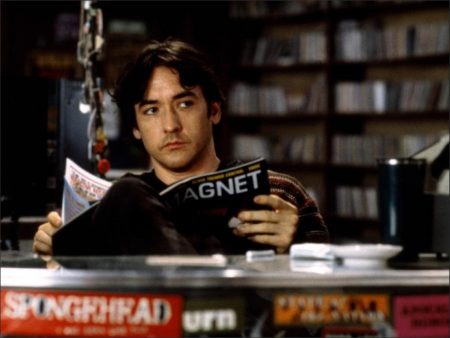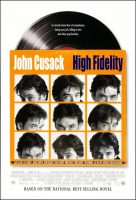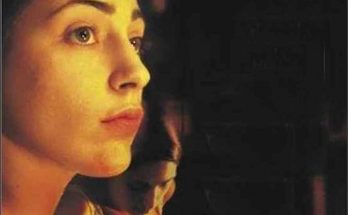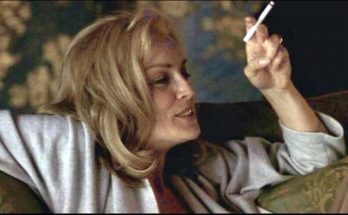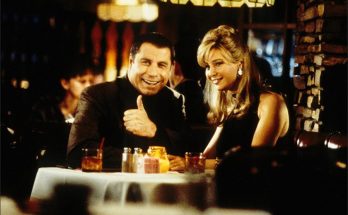Taglines: Let’s get it on. Maybe tonight.
High Fidelity movie storyline. Thirty-something Rob Gordon, a former club DJ, owns a not so lucrative used record store in Chicago. He not so much employs Barry and Dick, but rather keeps them around as they showed up at the store one day and never left. All three are vinyl and music snobs, but in different ways. Rob has a penchant for compiling top five lists. The latest of these lists is his top five break-ups, it spurred by the fact that his latest girlfriend, Laura, a lawyer, has just broken up with him. He believed that Laura would be the one who would last, partly as an expectation of where he would be at this stage in his life.
Rob admits that there have been a few incidents in their relationship which in and of themselves could be grounds for her to want to break up. To his satisfaction, Laura is not on this top five list. Rob feels a need not only to review the five relationships, which go back as far as middle school when he was twelve, and try to come to terms with why the woman, or girl as the case may be, left him, but also, in the words of Charlie Nicholson, number four on the list, “what it all means” for why he has ended up where he is, which is nowhere, personally or professionally, close to what he envisioned. He also has to come to terms with what it means that Laura has moved on to Ian Raymond, a man for who neither had any respect when they were together.
High Fidelity is a 2000 American romantic comedy-drama film directed by Stephen Frears. It stars John Cusack, Iben Hjejle, Jack Black, Todd Louiso, and Lisa Bonet. The film is based on the 1995 British novel of the same name by Nick Hornby, with the setting moved from London to Chicago and the name of the lead character changed. After seeing the film, Hornby expressed his happiness with Cusack’s performance, saying that “at times, it appears to be a film in which John Cusack reads my book”.
About the Production
High Fidelity premiered at the El Capitan Theater in Hollywood. The post-party was held at the Sunset Room where Tenacious D performed. The film was given a wide release on March 31, 2000, grossing $6.4 million on its opening weekend. It grossed $47.1 million of which $27.3 million was from the US.
Nick Hornby’s book was optioned by Disney’s Touchstone Pictures in 1995 where it went into development for three years. Disney executive Joe Roth had a conversation with recording executive Kathy Nelson who recommended John Cusack and his writing and producing partners D. V. DeVincentis and Steve Pink adapt the book.
She had worked previously with them on Grosse Pointe Blank and felt that they had the right sensibilities for the material. According to Cusack, DeVincentis is the closest to the record-obsessive characters in the film, owning 1,000 vinyl records and thousands of CDs and tapes. They wrote a treatment that was immediately greenlit by Roth.
The writers decided to change the book’s setting from London to Chicago because they were more familiar with the city and it also had a “great alternative music scene”, according to Pink. Cusack said, “When I read the book I knew where everything was in Chicago. I knew where the American Rob went to school and dropped out, where he used to spin records. I knew two or three different record shops when I was growing up that had a Rob, a Dick and a Barry in them”.
Charlotte Tudor, of the film’s distributor, Buena Vista, said: “Chicago has the same feel as north London, there is a vibrant music scene, a lot of the action is set in smoky bars and, of course, there is the climate. But everyone, including Nick, felt that geography was not the central issue. It has a universal appeal”. Scenes were filmed in the neighborhood of Wicker Park, Chicago.
Cusack found that the greatest challenge adapting the novel was pulling off Rob Gordon’s frequent breaking of the fourth wall and talking directly to the audience. The screenwriters did this to convey Rob’s inner confessional thoughts and were influenced by a similar technique in the Michael Caine film, Alfie. Cusack rejected this approach because he thought that “there’d just be too much of me”.[3] Once director Stephen Frears signed on to direct, he suggested using this technique and everyone agreed to use it.
Cusack and the writers floated the idea that Rob could have a conversation with Bruce Springsteen in his head, inspired by a reference in Hornby’s book where the narrator wishes he could handle his past girlfriends as well as Springsteen does in his song, “Bobby Jean” on Born in the U.S.A. They never believed they would actually get the musician to appear in the film, but thought putting him in the script would get the studio excited about it. Cusack knew Springsteen socially and called the musician up and pitched the idea. Springsteen asked for a copy of the script and afterwards agreed to do it.
Casting
Frears was at the Berlin International Film Festival and saw Mifune’s Last Song, starring Iben Hjejle, and realized that he had found the actress for the role. Frears read Hornby’s book and enjoyed it but did not connect with the material because it was not about his generation. He accepted the job because he wanted to work with Cusack again (they had worked together previously on The Grifters) and liked the idea of changing the setting from London to Chicago. The director was also responsible for insisting on keeping Jack Black on as Barry. Frears has said that many people from the studio would come to watch his rushes.
One of the challenges that the screenwriters faced was figuring out which songs would go where in the film because Rob, Dick, and Barry “are such musical snobs,” according to Cusack. He and his screenwriting partners listened to 2,000 songs and picked 70 song cues.
High Fidelity (2000)
Directed by: Stephen Frears
Starring: John Cusack, Jack Black, Lisa Bonet, Joelle Carter, Joan Cusack, Sara Gilbert, Iben Hjejle, Todd Louiso, Lili Taylor, Natasha Gregson Wagner
Screenplay by: D. V. DeVincentis, Steve Pink, John Cusack, Scott Rosenberg
Production Design by: David Chapman, Thérèse DePrez
Cinematography by: Seamus McGarvey
Film Editing by: Mick Audsley
Costume Design by: Laura Bauer
Set Decoration by: Larry Lundy
Art Direction by: Nicholas Lundy
Music by: Howard Shore
MPAA Rating: R for language and some sexuality.
Distributed by: Buena Vista Pictures
Release Date: March 31, 2000
Views: 201
